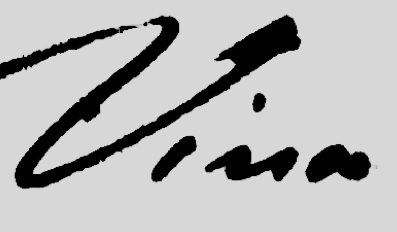The telephone rang at the History Department but no one answered. The call went straight to voicemail:
“Hello, I am interested in your slave manifest inventory,” Mrs. Slaughter said. “I understand Rice University houses a great inventory of manifests. I wanna search for a ship. I would appreciate a call back.”
The next day, the department’s program administrator forwarded the message to Dr. Domingues, an associate professor of history at Rice and host of SlaveVoyages.org, who returned the call:
“Hello Mrs. Slaughter! I’m returning your call regarding a ship you’re looking for. How can I help?”
“Thank you! I’m searching for a ship called Charles Morgan. Do you have any information about it?”
Dr. Domingues had been researching the U.S. coastwise traffic to Texas for almost two years at that point. He was very familiar with that name. After all, Charles Morgan had been a transportation tycoon in the nineteenth century. His ships ferried many, if not most, of the enslaved African Americans carried to the Gulf Coast during that period. Nevertheless, Dr. Domingues decided to run a search for the ship on the website’s Intra-American Slave Trade Database:
“Yes, we have 151 records of voyages by ships with that name. Do you have any additional details that would help us narrow down the search?” he asked.
“Well… I’m looking for one of my ancestors,” Mrs. Slaughter replied. “I know she sailed from New Orleans to Galveston on that ship in 1854. Her name was Vina. She must have been a teenager at that time.”
Dr. Domingues ran another search, this time on the website’s Oceans of Kinfolks database, and it returned only one record matching the new criteria: Vina, female, 14 years old, racially described as “yellow,” boarded the Charles Morgan in New Orleans and sailed to Galveston on June 2, 1854.
“Did she travel alone?” Mrs. Slaughter asked.
It was common for ship captains to transport enslaved people belonging to different owners, so a single voyage could be connected to multiple slave manifests. But researchers have cross-listed the manifests with ship departures announced in contemporary newspapers, and subsequently merged this information into discrete records of voyages. Dr. Domingues looked up Vina’s voyage details and could confirm:
“Yes, I’m afraid she sailed alone. She is the only enslaved person recorded in that voyage.”
What did happen to Vina after her 1854 voyage? What does a descendant make of these findings? Learn from Mrs. Vanessa Slaughter herself at her upcoming talk, "From New Orleans to Galveston to St. Louis and Beyond," Thursday, June 15, 2023, 5:30 pm to 8:00 pm at the Missouri History Museum.
Daniel B. Domingues da Silva is an Associate Professor of History at Rice University. He is the author of The Atlantic Slave Trade from West Central Africa, 1787-1860 (Cambridge University Press, 2017) and the host of SlaveVoyages.org.
This post was published with permission from Mrs. Vanessa Slaughter.
The post “Finding Vina” first appeared in Echoes: The SlaveVoyages Blog. It is part of a series of posts exploring the history and legacies of the slave trade to Texas.
